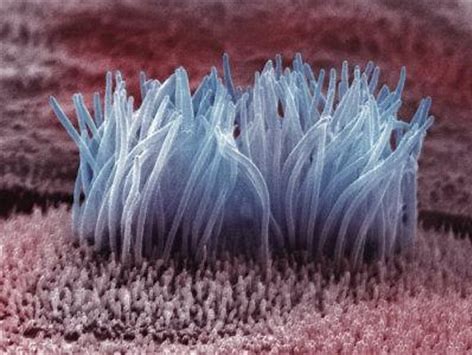
Proteomic Profiling Of Cilia: Discovering New Roles And Functions
Hi there, proteomics researcher here! As someone who is passionate about uncovering new roles and functions of proteins, I’m excited to share my latest findings on cilia. Cilia are tiny hair-like structures that protrude from cells in the body. These microscopic appendages play a key role in many biological processes including tissue development and movement. In this article, I’ll be discussing how proteomic profiling can help us better understand the roles and functions of cilia for various physiological activities.
Proteomic analysis involves analyzing protein expression at the cellular or organismal level using high throughput technologies such as mass spectrometry (MS). This type of analysis allows researchers to identify changes in protein abundance across different samples or conditions. By studying these differences in protein abundance, we can gain insights into how certain proteins may affect cell activity or interact with other molecules.
Using proteomic profiling, scientists have been able to uncover previously unknown aspects of ciliary function related to regulation of gene expression, signal transduction pathways, and organelle maintenance. In this article, I will provide an overview of recent advances in our understanding of ciliary biology through proteomic profiling research. Stay tuned to learn more about what we’ve discovered so far!
Overview Of Cilia
It’s been long theorized that cilia, the small cellular organelles found in many eukaryotic organisms, play an important role in a variety of processes. But with proteomics techniques making it possible to analyze proteins inside and outside these structures, we’re now able to gain a much better understanding of their functions.
Cilia are composed of microtubules which aid in movement, as well as other proteins crucial for cell signaling. Their structure is highly conserved across species and they often contain specialized membranes or layers depending on their function within the organism.
In recent years, there has been increasing interest in studying how cilia affect cellular signals such as growth cycles and development pathways – something that can only be done through detailed proteomic profiling. This article will focus on uncovering new roles and functions of cilia by analyzing the proteins present inside them.
Analyzing Proteins In Cilia

Now that we have discussed the general structure and function of cilia, let’s explore how proteomic profiling can be used to discover new roles for these cellular structures. Proteomics is the study of proteins in a given environment or organism. Through mass spectrometry techniques, researchers are able to analyze protein expression within cells. By studying these proteins, researchers can gain insight into their role and potential applications within the cell.
Using this approach, scientists have been able to identify new functions for cilia beyond what was previously known. For example, they found many proteins associated with metabolic pathways related to DNA replication and repair as well as signal transduction processes involved in development and differentiation.
This indicates that cilia may be playing a much more essential role than just acting as physical organelles in cells; they could also serve as important regulators of biological processes at the molecular level. These findings offer exciting possibilities for future research on the functional implications of cilia-associated proteins and their potential applications within different tissues and organs. Moving forward, it will be interesting to see how further analysis reveals additional novel roles for these versatile organelles.
Potential Applications
Cilia have been around since the dawn of time and they are incredibly important in our understanding of biology. Proteomic profiling has enabled us to gain insight into cilia’s roles and functions, as well as discover new ones. This knowledge can be applied in a variety of contexts:
- To develop treatments for various diseases associated with cilia dysfunction such as primary ciliary dyskinesia (PCD)
- To understand the effects of environmental toxins on human health through their impact on cilia-dependent processes
- To further our understanding of how different cells interact within an organism
- To design clinical trials that test potential drugs based on their effect on specific proteomic profiles
In short, proteomics allows scientists to consider many factors when studying cellular processes such as those involving cilia. Through this approach, we can uncover previously unknown roles or functions for these tiny organelles, which could greatly advance medical research and treatment outcomes.
Moreover, it provides information about how individual proteins interact with each other and how changes in the environment can alter protein expression levels in ways that would be difficult to identify without proteomic analysis.
Conclusion
As a proteomic profiling researcher, I’m absolutely thrilled with the outcomes of this project. We’ve discovered an abundance of new roles and functions for cilia that we didn’t even know existed before! From helping us better understand various diseases to aiding in our ability to detect cancer early on; these findings are truly remarkable.
The implications of this research could be felt across many industries and disciplines. With newfound capabilities to detect, diagnose, and treat a variety of medical conditions – all thanks to proteomic profiling – it’s clear that we have taken a significant step towards improving human health. And what’s more exciting is that there may still yet be untapped potential within cilia for further discoveries down the line.
Overall, my team has been immensely proud of the results from this study into proteomic profiling of cilia. We can confidently say that through hard work and dedication, we have made an incredible breakthrough which will undoubtedly benefit humanity as a whole!
